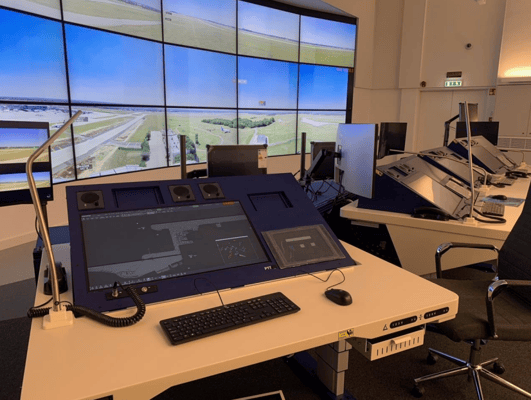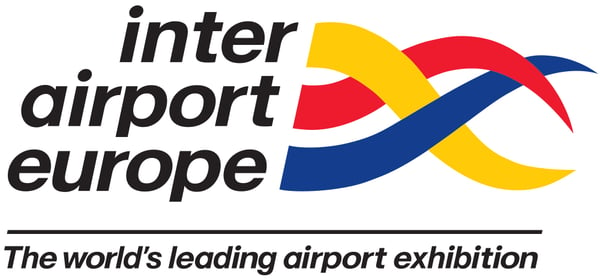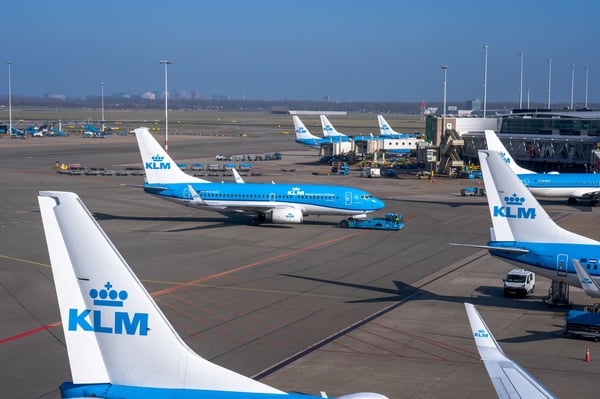The need for accurate Estimated Landing Times
Fraport announced they will use data and algorithms from FlightAware to improve the landing time estimation at their hub in Frankfurt, the largest airport in Germany and main hub of Lufthansa. The quality of Estimated Landing Time (ELDT), the estimated time at which an aircraft will touchdown on the runway, is key to seamless airport operations. Since the ELDT is a fundamental input for the planning and execution of turnaround process, its accuracy and predictability is of utmost importance for all actors involved (Aircraft Operator, Ground Handlers, Air Navigation Services Provider, Airport Operator) and it highly impacts all related procedures such as the dispatch of gates, passenger buses, mobile air-stairs, catering replenishment, aircraft cleaning, aircraft refuelling and before all the staff required to perform all these tasks. These resources are all limited and sudden changes in landing times might require their re-allocation and lead to shortages.
When two flights scheduled to land one hour apart eventually land within minutes because of delays or shortcuts, extra staff is required to handle them both simultaneously. Or passengers will have to wait and this is definitely not what airports or airlines wish for, not to mention passengers. Not having sufficient resources also makes it impossible to make up for lost time and reduce delays. As a passenger, the worst thing to hear after reaching the parking position at the destination airport is a passenger address from the captain saying that there is no airstairs, bus or gate available. From a ground handler or airport operator perspective, planning with tight resources and last-minute changes is not easy. Having reserve staff on-call helps, but they require time to reach the airport.
The ATC view
One could argue that ATC knows better and could inform the airport of changes of the ELDT. Collaboration between ATC and airport is not always an easy thing but politics apart, ATC also has different needs because ATCOs deal with flights on a tactical basis and for a shorter amount of time. ATC gets flight plans in advance but they are just that: plans. Typically, an ATC unit receiving a flight from a neighbouring unit gets a so-called activation message 10 to 15 minutes before the flight reaches the boundary. If the estimated time over the boundary changes by more than 3 minutes, a revision message must be sent. These values vary on a per-case basis but they are quite representative.
Despite the fact that, as soon as aircraft reach the planning time horizon, the AMAN tool (if present) provides the Airport Operator with both an optimal arrival sequence and a Target Landing Time (TLDT), to be used as goals during the subsequent prediction of aircraft trajectories, getting proper ELDTs is not as easy as it seems. This because the TLDT is not a constraint but just a progressively refined planning time.
The farther the planning time horizon the more complex the problem. Predicting the landing time of an aircraft on final approach is a trivial case but this is likely too late for re-allocating resources efficiently if required. With a time horizon of 30 minutes or more, things get harder. In the case of Frankfurt, it is possible that the landing runway is not affected yet. If the Arrival Manager (AMAN) is in operation, one can assume that flights will follow the published arrival routes and transitions but if not, ATC can give shortcuts and significantly change the scheduled landing times.
When delays exceed 30 minutes, aircraft operators must update their flight plans but anything below this value can remain unnoticed. So-called departure slots given by the Network Manager in case of overload help introduce some predictability in the ELDT predictions but they are time windows of 15 minutes.
Because of the relative small size of ATC units in Europe, getting an accurate ELDT from ATC more than 45 minutes in advance becomes almost impossible. The inter-unit coordination also occurs between centers of a single Air Navigation Service Provider (ANSP). A Geneva - Frankfurt flight gets through Geneva, Zurich, Rhine (Karlsruhe) and Langen centers so even the coordinated time entering German airspace from Switzerland does not give Frankfurt airport a very accurate estimate and this is less than 30 minutes before landing.
The Network Manager
Because of this fragmentation and of the way ATC is working, Fraport simply can not get the accurate ELDTs they wish from the local ATC. The next level is the Network Manager (NM), EUROCONTROL in this case. One of the NM´s roles is to calculate ELDTs and dispatch Flight Update Messages (FUM). This is done on the base of multiple sources, including flight plans, departure messages and even surveillance information from ANSPs to the NM. This coverage is however not complete and the surveillance data is sent to the NM once every 30 seconds. The NM receives messages from the operators but the data is not always consistent and not all operators can send such information. The NM also receives better information from A-CDM airports but here again, this does not cover all flights. The ELDTs carried by FUM messages are helpful but not yet to the level that Fraport wants.
Here come FlightAware, data and artificial intelligence
So Fraport’s next move is to use data and artificial intelligence algorithms from FlightAware to predict ELDTs with a longer time horizon. With the global coverage offered by FlightAware thanks to the Aireon satellite based ADS-B, it is theoretically possible to follow any flight bound to Frankfurt all the way from its take-off. Even outside of the area of responsibility of the Network Manager. This will not prevent ATC shortcuts along the way to modify the flows or change the scheduled time of arrival of an aircraft so altering current predictions but such deviations will get detected immediately and those predictions will thus be adapted accordingly.
How much can artificial intelligence (AI) help with flights that are almost similar but always different? Will the AI be able to detect changes caused by weather or traffic load? How will seasonal changes impact the prediction?
Air traffic controllers familiar with a given airspace can look at a radar image and say in a split second if things are running normally or if the traffic flows are disturbed by weather or other factors. This is exactly what an AI is also good at: identifying patterns. An AI looking at all Frankfurt-bound flights, as well as all surrounding airspace could even identify patterns unknown to ATC and airline operators. By nature, AI is good at finding patterns in large amounts of data, without any knowledge about the causes creating them. With sufficient data, which is now likely available, AI could get good predictions, even better than 4D trajectories calculated using aircraft performance data. The AI predictions will be based on data influenced by airline procedures, habits and could differentiate based on many criteria that theoretical models don’t account for.
One can only assume that Fraport did some initial evaluations and trials before making the decision to use FlightAware’s data and algorithms. Only time will tell how good such a system can be and hopefully Fraport and FlightAware will communicate on their results later.
What does that mean for the future of ATM?
We are now entering a time where a private organization, not run by a state, can provide better data and prediction than national or even trans-national ANSPs. In this age of data, it is also likely that FlightAware and the like can provide better flight profile and performance data than theory and research based models like BADA.
Fraport obviously did some initial evaluations and trials before making the decision to use FlightAware’s data and algorithms. Only time will tell how good such a system can be and hopefully Fraport and FlightAware will communicate on their results later.
Fraport plays a pioneering role and it is likely that others will follow soon. After all, other airports and even ANSPs have similar problems. The limitations of staff planning based on flight plans only are real and predicting the time at which flights will enter a given sector is not very different from predicting landing times. Even the Network Manager could benefit from such predictions and enhance the quality of the FUMs. It is not surprising to see an airport act first, as airports traditionally move faster than ANSPs because of their commercial nature.
Will FlightAware and similar organizations take a critical role in ATC by providing not only raw ADS-B data but also derived, enriched information and AI-based predictions? Or will most organizations pay for the data only and run their own AIs because of the strategic importance of such algorithms? It is interesting to remember that Aireon is now certified as an ANSP, at least for CNS. This means the quality of their data is certified and their processes have been safety-assessed. But how much can ANSPs or the Network Manager rely on such third parties for this kind of services?



